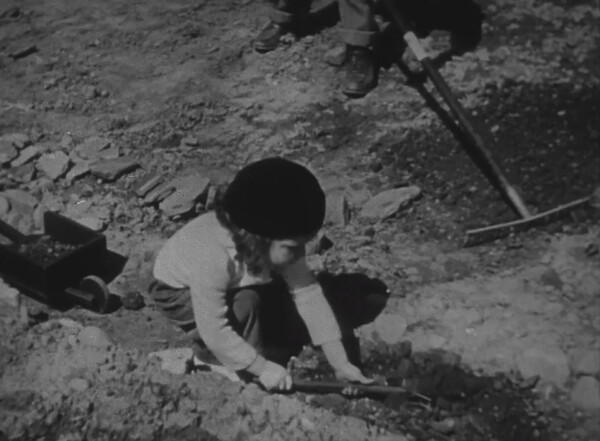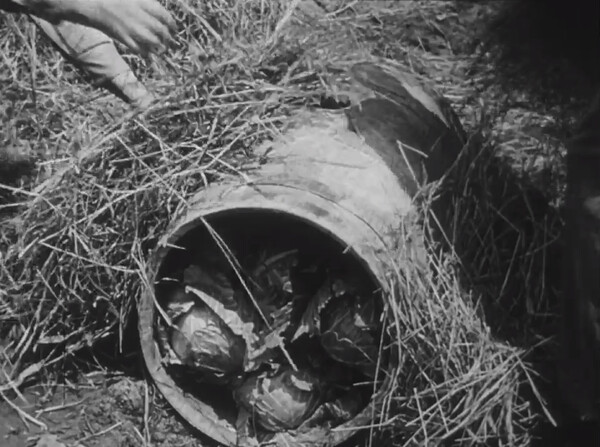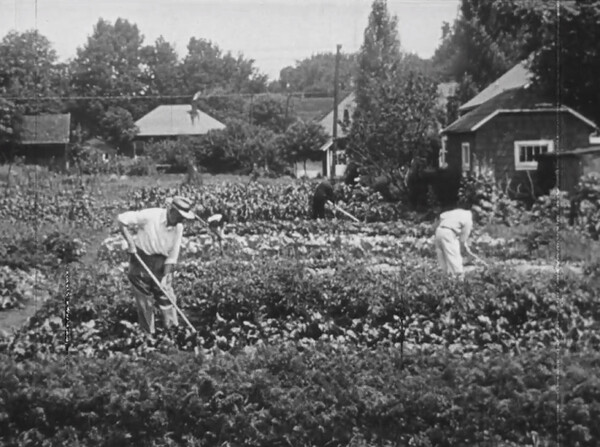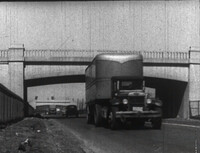Victory Gardens
While many know of personal or community gardening efforts during WWII, the practice dates back to at least the first World War. During WWI, the home gardening effort was originally referred to as “war gardens” and was a popular activity in the U.S. and in the U.K.40 Charles Lathrop Pack even created the private organization called the National War Garden Commission in 1917 to encourage the American public to partake in planting.41 From 1917 to 1918 gardening rates spiked in the U.S., from 3.5 million garden plots to 5.2 million.42 The reasons for planting these gardens were the same as they would be in WWII: the relief of pressure from constrained food supplies, the upkeep in nutritional health, and the maintenance of morale for the war. After the conclusion of WWI, war gardens were rebranded “victory gardens,” as governments attempted to keep individuals producing food to ease supply constraints that lasted after the war officially ended.43 Gardening again saw popularity during the Great Depression, this time termed as “relief gardens” to supplement the diets of struggling Americans. America would once again turn to gardens in WWII.

Victory gardens were often marketed as whole family acitivities, as in Grow Your Own. Notice the miniature wheelbarrow!
With U.S. involvement in World War II coming in December of 1941, victory gardens soon sprouted up throughout America. Rationing measures and large government contracts for agricultural products led to shortages in availability for foodstuffs intended for the public, as was the case in WWI. However, the size and duration of WWII escalated the situation.44 By growing local produce, the U.S. could save more produce for the war effort, conserve gas and manpower dedicated to harvesting and transporting food to the public, and keep the nutritional content of American diets high.45 Nutritional intake was a serious concern due to years of food insecurity caused by the Great Depression. The U.S. government estimated large portions of the citizenry were suffering from vitamin deficiencies and scurvy or near-scurvy conditions as a result.46 Soon victory gardens popped up around the country, outside of suburban homes, on farms, throughout cities on communal and vacant property, on the White House lawn, and at schools.47 A victory garden even grew within a baseball stadium in Florida.48 Gardens were not just an American solution to war demands either, U.K. residents planted gardens in “slacker lands,” a name given to areas frequently targeted by Nazi bombers during the Blitz. The contrast between destruction and new growth was not lost on U.K. gardeners.49

Creating winter storage for victory garden harvests was critical, like this shot from Saving the Garden Crop showing the creation of outside cabbage storage.
To encourage the planting of victory gardens, the USDA created several films detailing the entire process of gardening. Films were targeted mainly towards women, as they were often the one’s in charge of grocery spending and food preparation within the traditional family dynamic of the 1940s. Women were also targeted as the practice would fit directly within the established domestic role of the woman homemaker, without challenging the notion like other wartime efforts such as women’s paid labor outside the home in factories and agriculture.50 Films tended to be short in duration and were produced to air starting in the month of April each year to coincide with the start of the planting season.51 With patriotic themes, the films demonstrated the proper gear, growing patterns, planting etiquette, and even preservation methods for produce. Preservation of grown food, which mostly centered on vegetables, was a central tenet of victory garden materials so Americans could keep nutritional value even through the winter. A great example of this is the film Saving the Garden Crop which details one family’s thorough preservation efforts inside and outside their house, along with canning ideas.52 Home canning, with aid from pressure cookers, reduced domestic use of canned food, saving metal and an excellent source of non-perishable food for combat.53 This was especially important as the U.S. government took major portions of canned food for military use, including over 50 percent of all canned food in 1943.54 Victory gardening was truly a year-round resource.
Joe Kelly speaking about the importance of healthy, free school lunches. A topic still in debate today.
How successful was the victory garden campaign in the U.S.? The victory garden movement peaked in 1943 with a USDA estimated 21 million gardens, up from 5-6 million before the war.55 The USDA also reported that the 1943 effort produced 8 million tons of food.56 By the end of the war, the number of gardens declined to about 18 million, and although there was encouragement to continue planting gardens to help the recovery and, later, to combat communism, the trend continued downwards.57 As much as 40% of the fresh produce in the U.S. during the war was grown from victory gardens.58 It should be noted that many statistics on victory gardens originate from government estimates. If these numbers were even remotely accurate, victory gardens were a great success for the American war effort.
Besides statistical output, victory gardens provided less tangible benefits as well. The voluntary effort of planting and maintaining a victory garden created greater buy-in to the war effort.59 Besides clear patriotic messages found within the films connecting victory gardens with the war, the act of planting a victory garden was a way to express one’s patriotism.60 Promotional materials, including films, connected victory gardens directly to fighting the war, creating an immediacy for planting crops and militarizing the home.61 To get the point across, films often showed direct shots of military vehicles, combat, and war scenes at the beginning of films, while using military language to describe planting victory gardens. Further, as demonstrated in The Farmer’s Wife with the shots of the mother looking at her son’s military photos between gardening sequences, growing extra food was a way to feel connected and gain a sense of contribution to your loved ones serving across the world. For the U.S., even if the victory garden programs didn’t produce extra food, they were still immensely useful to the overall wartime strategy on the home front.





